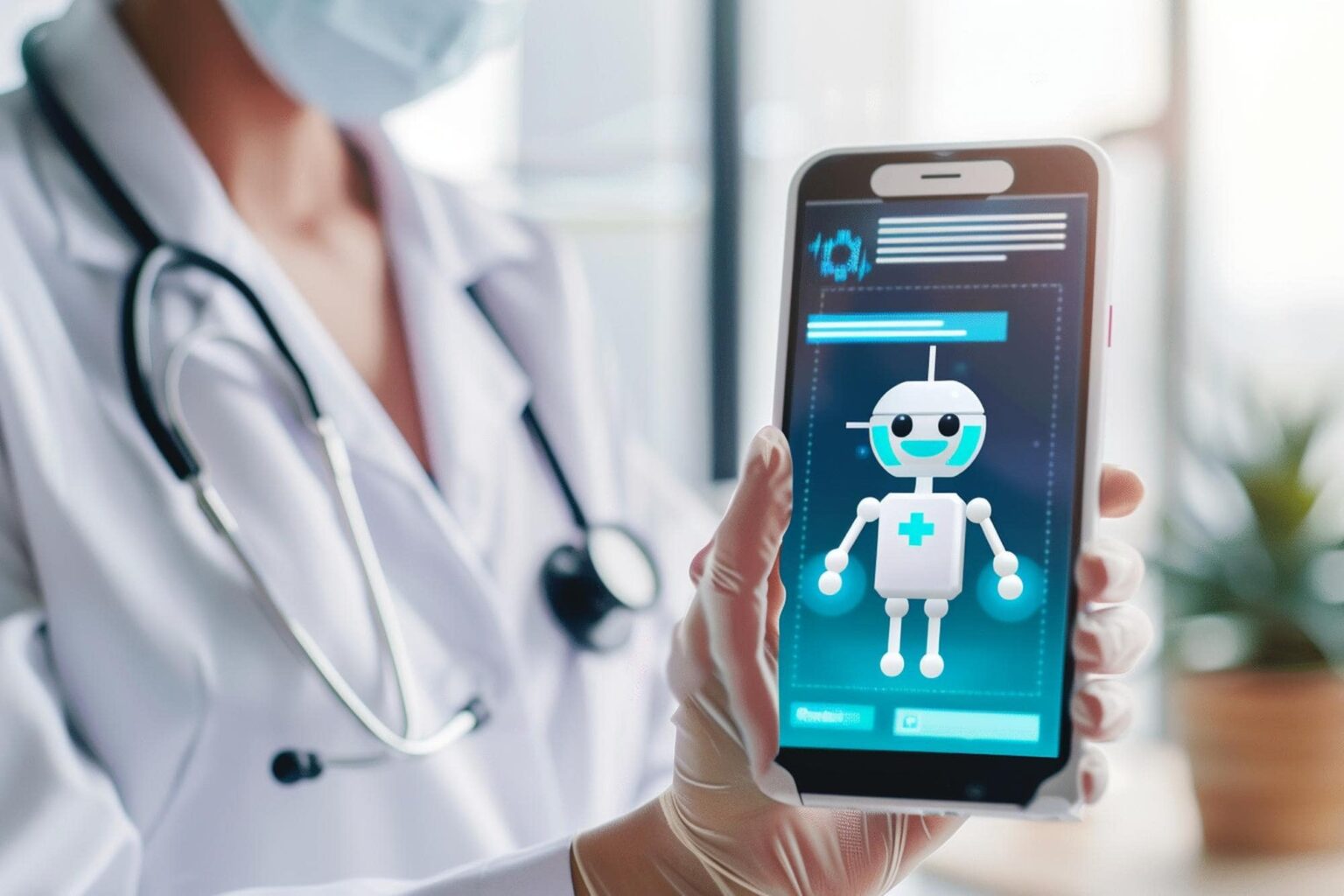Healthcare chatbots are AI-powered conversational interfaces that play a crucial role in improving patient engagement, access to information, and administrative efficiency in healthcare settings. Here’s how healthcare chatbots work and their benefits:
Contents
How Healthcare Chatbots Work:
- Natural Language Processing (NLP): Healthcare chatbots use natural language processing (NLP) algorithms to understand and interpret user queries, responses, and conversational nuances. NLP enables chatbots to converse with patients in a human-like manner and extract relevant information from text or speech inputs.
- Knowledge Base Integration: Healthcare chatbots are integrated with knowledge bases, clinical guidelines, and medical databases to provide accurate and up-to-date information to users. Chatbots leverage structured and unstructured data sources to answer questions, offer recommendations, and deliver personalized health insights.
- Task Automation: Chatbots automate routine administrative tasks such as appointment scheduling, prescription refills, and medical billing inquiries. By streamlining administrative workflows and handling basic inquiries, chatbots free up healthcare staff’s time to focus on more complex patient care activities.
- Personalization: Advanced healthcare chatbots offer personalized recommendations, health tips, and care management guidance based on individual patient profiles, preferences, and medical history. Personalization enhances patient engagement, adherence to treatment plans, and health outcomes.
Benefits of Healthcare Chatbots:
- 24/7 Accessibility: Healthcare chatbots provide round-the-clock access to information, support, and services, eliminating barriers to healthcare access and improving patient satisfaction. Patients can interact with chatbots at any time, from anywhere, using their preferred communication channels.
- Improved Patient Engagement: Chatbots engage patients in interactive conversations, health assessments, and symptom tracking, fostering proactive health management and self-care behaviors. By empowering patients with knowledge and resources, chatbots enhance patient engagement and accountability for their health.
- Efficient Triage and Navigation: Chatbots assist patients in triaging symptoms, determining the urgency of their healthcare needs, and navigating appropriate care pathways. Chatbots direct patients to the right providers, services, or resources based on their symptoms, location, and clinical guidelines.
- Cost Savings: Chatbots reduce administrative costs, improve operational efficiency, and optimize resource utilization in healthcare organizations. By automating repetitive tasks, reducing appointment no-shows, and minimizing staff workload, chatbots contribute to cost savings and revenue generation.
- Scalability and Consistency: Healthcare chatbots offer scalable and consistent support to a large number of users simultaneously, ensuring uniformity in information delivery and service quality. Chatbots handle inquiries efficiently, without the need for human intervention, even during peak demand periods.
Use Cases of Healthcare Chatbots:
- Appointment Scheduling: Chatbots assist patients in booking appointments, rescheduling visits, and checking availability with healthcare providers. Chatbots also send appointment reminders, confirmations, and follow-up notifications to patients via SMS or email.
- Medication Management: Chatbots remind patients to take medications, refill prescriptions, and track adherence to medication regimens. Chatbots provide dosage instructions, drug interactions, and side effect information to users, enhancing medication safety and adherence.
- Symptom Assessment: Chatbots conduct symptom assessments, provide preliminary diagnoses, and offer self-care recommendations based on users’ reported symptoms and medical history. Chatbots triage urgent cases, escalate emergencies, and guide patients to seek appropriate medical attention when necessary.
- Health Education: Chatbots deliver health education content, wellness tips, and disease prevention strategies to users, promoting healthy lifestyle behaviors and disease management techniques. Chatbots address frequently asked questions, debunk health myths, and provide evidence-based information on medical conditions.
Considerations for Implementation:
- Data Privacy and Security: Healthcare chatbots must comply with data privacy regulations such as HIPAA to protect patients’ sensitive health information. Implementing encryption, access controls, and secure authentication mechanisms ensures data confidentiality and integrity.
- Clinical Validation: Chatbots should undergo rigorous testing, validation, and clinical evaluation to ensure accuracy, reliability, and clinical safety. Collaborating with healthcare providers, subject matter experts, and regulatory authorities validates chatbot performance and mitigates potential risks.
- User Experience Design: Designing intuitive user interfaces, conversational flows, and error handling mechanisms enhances user experience and engagement with healthcare chatbots. User-centered design principles prioritize usability, accessibility, and inclusivity for diverse patient populations.
- Integration with EHR Systems: Integrating chatbots with electronic health record (EHR) systems, telehealth platforms, and other healthcare IT systems ensures seamless data exchange and interoperability. Chatbots access patient data securely, update medical records, and synchronize information across systems.
Future Directions:
- Multimodal Interfaces: Future healthcare chatbots will support multimodal interfaces, including voice recognition, gesture control, and augmented reality (AR) interactions. Multimodal interfaces enhance user engagement, accessibility, and natural interaction with chatbots.
- AI-Powered Clinical Decision Support: Advancements in artificial intelligence (AI) and machine learning (ML) enable chatbots to offer clinical decision support, diagnostic assistance, and treatment recommendations to healthcare providers. AI-driven chatbots analyze patient data, medical literature, and best practices to assist clinicians in decision-making.
- Emotional Intelligence: Next-generation healthcare chatbots will incorporate emotional intelligence capabilities to recognize and respond to users’ emotions, sentiments, and mental health needs. Emotionally intelligent chatbots offer empathetic support, mental health interventions, and crisis counseling services.
- Personal Health Assistants: Chatbots evolve into personalized health assistants that proactively manage users’ health and well-being across the care continuum. Personal health assistants offer continuous support, monitoring, and coaching to individuals, empowering them to achieve their health goals and navigate their healthcare journey effectively.
In summary, healthcare chatbots play a pivotal role in improving patient engagement, access to information, and administrative efficiency through AI-powered conversational interfaces. By offering personalized support, triaging healthcare needs, and delivering timely interventions, chatbots enhance the quality, accessibility, and efficiency of healthcare delivery in an increasingly digitalized and patient-centric healthcare landscape.



